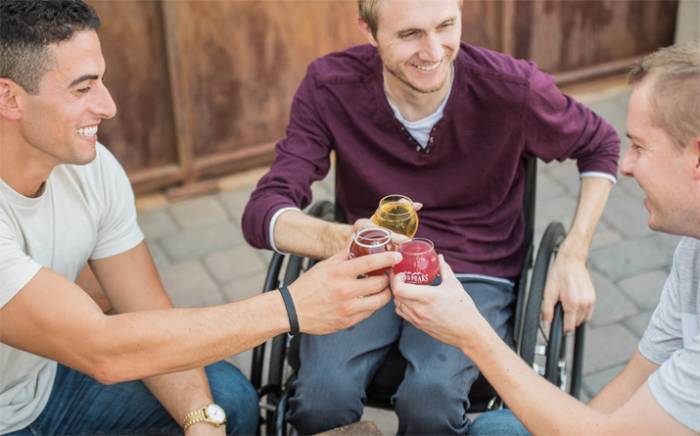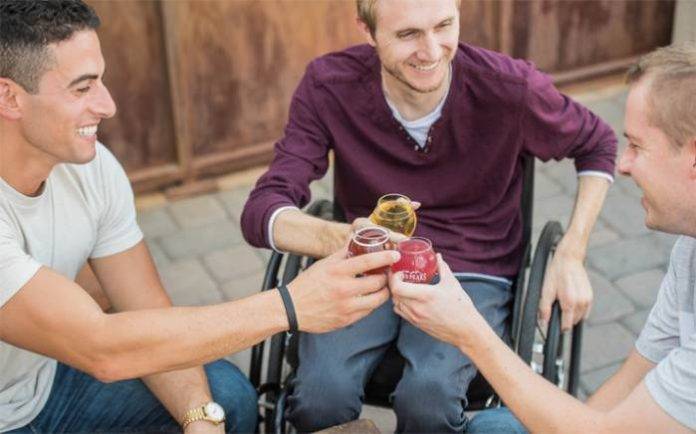Around 61 million adults in the U.S. are living with a disability, reports the CDC, and around 19.3% are employed on an average year. Across all age groups, states the Bureau of Labor Statistics, people with disabilities are much less likely to be employed than those without disabilities, and it is easy how this can be one of many challenges when it comes to independence.

If you are disabled, then there are specific tools to arm yourself with to boost your chances of an independent, satisfying life. These include obtaining legal help, compiling the information you need to make wise choices, finding employment, and enjoying a sense of social integration.
Can The Legal System Help You?
Some disabilities can be caused by medical malpractice issues – including brain injuries, Erb’s palsy, and cerebral palsy (CP). Around 20% of all cases of cerebral palsy are caused by birth injuries, and if these are caused by medical malpractice, parents should seek legal recourse.
Doing so will ensure that as their children grow, they can have access to novel treatments that are proving successful in small trials – including stem cell therapy. Of course, the source of cerebral palsy can be genetic, infection-related, or the result of a traumatic injury. Medical malpractice can also affect adults, owing to factors such as missed heart attacks/strokes/infections, delayed or misdiagnosed cancer, surgical errors, and the like.
Staying Informed
It is important to be connected to your local community, but also to form an active part of groups and associations centered on your disability. Doing so will help you in two important ways: it will enable you to access information on new treatments, services and health professionals; and it will enable you to receive the support and friendship that can make a big difference to your quality of life. A study by H Tough and colleagues, published in the journal BMC Public Health, has shown that “social relationships play an important role in mental health and wellbeing in persons with disabilities.”
Poor social relationships, on the other hand, negatively impact mental health, and there is also an inverse relationship between poor relationship quality and depression. Ensuring that you are surrounded by positive, kind, helpful people will help keep you motivated and inspired to try out new things and learn new skills that can help you in your personal and professional life.
Considering Independent Living
The idea behind independent living is that disabled people are more empowered when they can direct their lives and organize their immediate surroundings. If you need supportive living options, know that there are a few to choose from.
These include living in an assisted living community (in which help is at hand for everyday activities such as dressing and eating), independent living (living within a community designed for people with disabilities as it has common areas and some support – though less than those provided in assisted living communities), and home care (at-home personal and medical support that follows a set schedule). At home care is the costliest of the three options, but you can reduce your economic burden by limiting the amount of aid you contract.
Ensuring Your Employment Rights Are Respected
If you are interested in joining the workforce, familiarize yourself with The Americans with Disabilities Act first. This is a civil rights law that prevents employers from discriminating against applicants with disabilities. Before you apply for a job, make sure you have the required qualifications, and ensure that you are able to carry out the job’s essential functions. At the interview, the HR team cannot ask if you have a disability, but they can ask if you are able to carry out the stipulated essential functions.
During the application stage, you may decide to disclose your disability so that the company can make necessary amendments to the office design or procedure. For instance, if you have a visual disability, letting your employers know this will enable them to make changes such as using contrasting colors (so you can easily navigate stairs without a risk of falling) or purchasing special software (such as screen-reading software) that will enable you to achieve your goals efficiently.
Embarking on New Challenges
It is important to take some risks or to move beyond one’s comfort zone in order to benefit from overcoming challenges. Your goals could include taking public transport more often, improving your immunity naturally, or fighting stress proactively, day to day. You may also wish to try out a healthier diet or embrace the power of holistic activities. A 2021 study by the American Heart Association showed that group yoga, for instance, could help improve balance long after a stroke.
Yoga for chronic stroke patients can also help them become more active – something that is key for disabled people wishing to build networks and expand their horizons. As stated by the researchers, the benefits of holistic activities like yoga “have to do with the confidence of being more mobile.” Achieving better mobility, balance, and flexibility, can be very meaningful changes indeed for people with disabilities.
Embracing New Technologies
Innovative technology can help you get tasks done, with everything from adjustable electric beds to wearable e-Braille devices helping consumers feel more confident about getting through their day-to-day activities. The dot Braille smartwatch, for instance, raises or lowers letters in Braille to retrieve messages and text information.
The AXS Map, meanwhile, provides information about wheelchair-accessible ramps and restrooms in public spaces such as hotels, restaurants, and bars. Apps for the disabled have also raised the bar in terms of daily living and transport. The app assist-Mi, for instance, provides assistance at a touch. Services offered include transport to work, shopping for wanted items, or arranging travel. The app also gives service providers specific instructions when required.
Innovative technology can help you get tasks done, with everything from adjustable electric beds to wearable e-Braille devices helping consumers feel more confident about getting through their day-to-day activities. The dot Braille smartwatch, for instance, raises or lowers letters in Braille to retrieve messages and text information.
The AXS Map, meanwhile, provides information about wheelchair-accessible ramps and restrooms in public spaces such as hotels, restaurants, and bars. Apps for the disabled have also raised the bar in terms of daily living and transport. The app assist-Mi, for instance, provides assistance at a touch. Services offered include transport to work, shopping for wanted items, or arranging travel. The app also gives service providers specific instructions when required.
If you are disabled, building your sense of independence will help you to take part in professional and personal pursuits. Learning as much as you can about your condition and the latest treatments available is a good way to feel that you are an active decision maker instead of a passive bystander when it comes to your condition.
Applying for jobs you are interested in and obtaining the required education and experience are additional challenges you may find both doable and enjoyable. Finally, ensure that your legal rights are met if you have legal recourse against doctors or other individuals that may have caused or contributed to your disability.







































